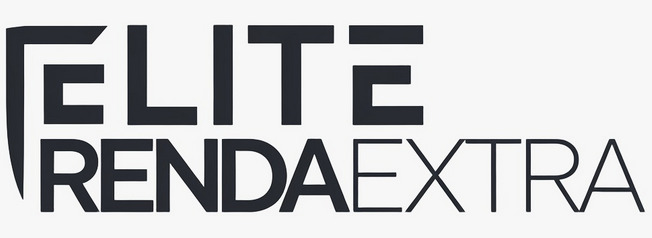Life has a knack for throwing unexpected financial curveballs. Whether it’s a sudden medical bill, an urgent car repair, or a can’t-miss opportunity that requires immediate cash, there are times when you simply need funds, and you need them fast. Waiting for traditional loan approvals can often take days, if not weeks – a luxury many don’t have in pressing situations.
Fortunately, the financial market has evolved, offering various quick personal loan options designed to provide rapid access to capital. Understanding these options, their benefits, and their potential drawbacks is crucial for making an informed decision when time is of the essence. This guide will help you navigate the landscape of fast funding solutions.
Understanding Quick Personal Loans
Quick personal loans are typically unsecured loans, meaning they don’t require collateral like your car or home. Lenders offering these loans focus on speedy application processes and rapid fund disbursement, often within the same day or the next business day. The convenience of online applications has significantly contributed to the rise and accessibility of these loan products. They are designed for short-term financial needs and usually come with repayment terms ranging from a few months to a few years.
The “quick” aspect refers primarily to the approval and funding speed. While this is a major advantage, it’s important to remember that this speed can sometimes come at the cost of higher interest rates or fees compared to more traditional, slower loan processes.
When Might You Consider a Quick Personal Loan?
There are numerous scenarios where a quick personal loan could be a viable solution. Here are some common situations:
- Medical Emergencies: Unexpected illnesses or accidents can lead to substantial medical bills that need immediate payment.
- Urgent Home or Auto Repairs: A leaking roof or a broken-down car can’t always wait for a lengthy loan approval process.
- Unexpected Travel: Sometimes, an urgent family matter or a sudden opportunity requires immediate travel funds.
- Debt Consolidation: While it requires careful consideration, some individuals use personal loans to consolidate higher-interest debts into a single, potentially more manageable payment. However, ensure the new loan offers better terms.
- Bridging Income Gaps: If you’re between jobs or waiting for a delayed paycheck, a small, quick loan might help cover essential expenses.
It’s crucial to assess if the situation truly warrants a loan, especially one that might come with higher costs due to its speed. A quick loan should ideally be for genuine needs rather than discretionary spending.
Types of Quick Personal Loan Options
Several types of loans fall under the “quick” category. Here’s a brief overview:
- Online Personal Loans: Offered by fintech companies and online lenders, these are often the most common type. The entire process, from application to funding, is typically handled online, making it very efficient.
- Payday Loans (Use with Extreme Caution): These are very short-term loans, usually due on your next payday. They are easy to get but come with exorbitant interest rates and fees, often leading to a debt trap. They are generally not recommended if other options are available.
- Installment Loans: These loans are repaid in regular installments over a set period. Many online quick personal loans are structured as installment loans.
- Lines of Credit: Some lenders offer personal lines of credit, which allow you to draw funds as needed up to a certain limit and only pay interest on the amount you borrow. Approval might be quick for some products.
Pros and Cons of Quick Personal Loans
Like any financial product, quick personal loans come with their own set of advantages and disadvantages. It’s important to weigh these carefully.
| Pros of Quick Personal Loans | Cons of Quick Personal Loans |
|---|---|
| Speed of Funding: The primary benefit is fast access to cash, often within 24-48 hours, or even sooner. | Higher Interest Rates (APR): Convenience and speed can come at a premium, with APRs potentially higher than traditional bank loans. |
| Convenient Application Process: Most applications can be completed online in minutes from anywhere. | Fees: Be aware of origination fees, late payment fees, or prepayment penalties that can add to the overall cost. |
| Flexible Use of Funds: Personal loans can generally be used for a wide range of purposes, unlike specific loans like auto or home loans. | Potential for Debt Cycle: If not managed responsibly, especially with very short-term, high-cost loans like payday loans, it can lead to a cycle of debt. |
| Accessibility: Some lenders cater to individuals with less-than-perfect credit, though terms might be less favorable. | Scams and Predatory Lenders: The online space can harbor illegitimate lenders; thorough research is essential. |
| Fixed Repayments (for installment loans): Knowing your monthly payment amount can help with budgeting. | Impact on Credit Score: Hard inquiries during application can slightly lower your score, and missed payments will significantly damage it. |
Eligibility Criteria for Quick Personal Loans
While criteria vary by lender, some common requirements include:
- Age: Typically, you must be at least 18 years old (or the age of majority in your jurisdiction).
- Income: Lenders need to see proof of a steady income source to ensure you can repay the loan. This could be from employment, self-employment, or other consistent sources.
- Credit Score: While some lenders specialize in loans for individuals with bad credit, a better credit score generally unlocks more favorable interest rates and terms. Lenders will perform a credit check.
- Bank Account: A valid checking account is usually required for fund disbursement and often for automatic repayments.
- Residency/Citizenship: You typically need to be a legal resident or citizen of the country where you’re applying.
- Identification: A government-issued ID is standard.
Some lenders might have minimum income thresholds or specific debt-to-income ratio requirements.
What If You Have Bad Credit?
If your credit history is not stellar, don’t despair. Options for personal loans for bad credit exist. These loans might come with higher interest rates and stricter terms, but they can be a lifeline in emergencies. Lenders specializing in this niche may focus more on your current income and ability to repay rather than solely on your past credit history. Improving your credit score over time is the best long-term strategy for accessing better loan terms.
How to Apply for a Quick Personal Loan: A Step-by-Step Guide
The application process is generally straightforward:
- Assess Your Need: Determine exactly how much you need to borrow. Avoid borrowing more than necessary.
- Check Your Credit Score: Knowing your credit score will give you an idea of the types of loans and rates you might qualify for.
- Research Lenders: Compare different online lenders, credit unions, or even banks that offer quick processing. Look at interest rates (APR), fees, loan terms, and customer reviews.
- Pre-qualify (if available): Many online lenders offer a pre-qualification process that allows you to see potential rates and terms without impacting your credit score (soft credit check).
- Gather Necessary Documents: Typically, you’ll need proof of identity (like a driver’s license), proof of income (pay stubs, bank statements), and your bank account details.
- Complete the Application: Fill out the formal application form accurately and completely. This will usually involve a hard credit check.
- Review the Loan Agreement: If approved, carefully read the loan agreement before signing. Pay close attention to the APR, repayment schedule, fees, and any penalties.
- Receive Funds: Once you sign the agreement, the funds are typically disbursed to your bank account, often within one business day.
Key Factors to Consider Before Accepting a Loan
Before you commit, take a moment to evaluate these critical aspects:
- Annual Percentage Rate (APR): This is the total cost of borrowing, including interest and certain fees, expressed as a yearly rate. Compare APRs, not just interest rates.
- Fees: Look out for origination fees (charged for processing the loan), late payment fees, and prepayment penalties (if you plan to pay off the loan early).
- Loan Term: A shorter term means higher monthly payments but less interest paid overall. A longer term means lower monthly payments but more interest paid over the life of the loan.
- Lender Reputation: Check reviews and ratings from sources like the Better Business Bureau (BBB) or Trustpilot. Ensure the lender is legitimate and transparent.
- Your Ability to Repay: Create a budget to ensure you can comfortably make the monthly payments without straining your finances. Defaulting on a loan has serious consequences.
Alternatives to Quick Personal Loans
If a quick personal loan doesn’t feel right, or if you don’t qualify for favorable terms, consider these alternatives:
- Credit Card Cash Advance: If you have a credit card, you might be able to get a cash advance. However, these often come with high fees and interest rates that start accruing immediately.
- Borrowing from Family or Friends: This can be a less formal and potentially interest-free option, but it’s crucial to put the agreement in writing to avoid misunderstandings.
- Selling Unused Assets: Selling items you no longer need can generate quick cash.
- Paycheck Advance from Employer: Some employers offer paycheck advances or short-term loans to employees.
- Negotiating with Creditors: If you’re struggling to pay a specific bill, contact the creditor to see if you can arrange a payment plan.
- Building an Emergency Fund: For the future, having an emergency fund with 3-6 months of living expenses is the best way to handle unexpected costs without borrowing.
Responsible Borrowing is Key
Quick personal loans can be incredibly helpful in a pinch, providing much-needed financial relief when time is critical. However, their convenience should be balanced with a responsible approach to borrowing. Always ensure you understand the terms, can afford the repayments, and have explored all available options. Rushing into a loan without due diligence can lead to further financial strain.
Ultimately, a quick personal loan is a tool. Used wisely, it can help you navigate financial emergencies effectively. Make sure you are in control of the tool, not the other way around. To make an informed decision and fully understand your quick personal loan options, it’s wise to consult resources from consumer protection agencies and ensure you are working with reputable lenders.



